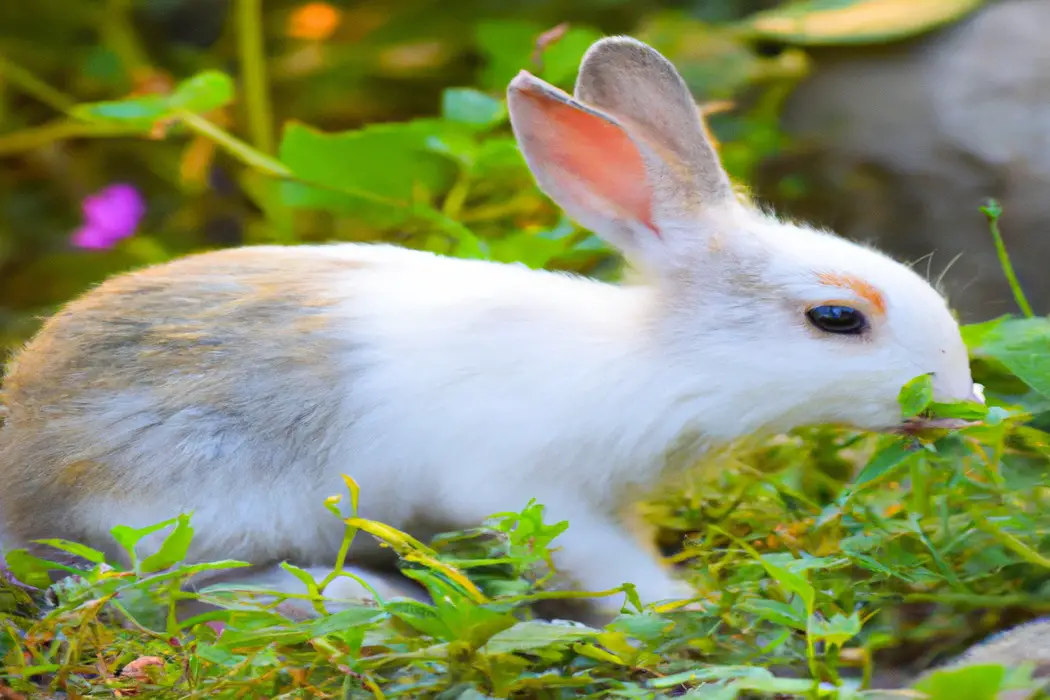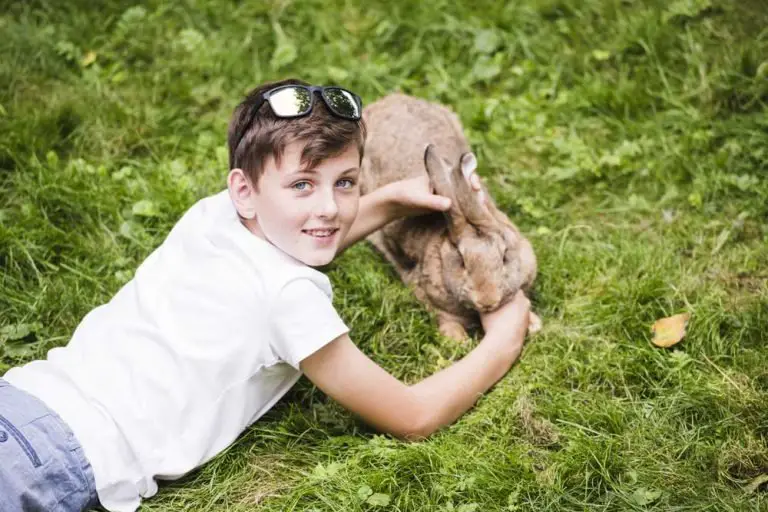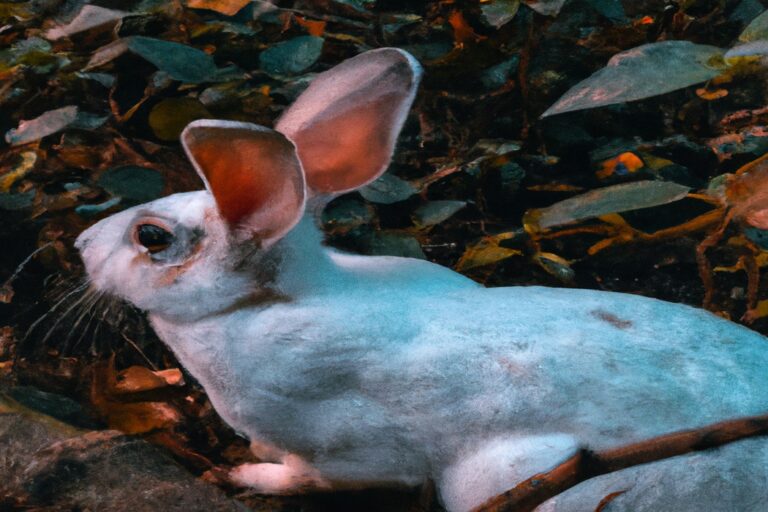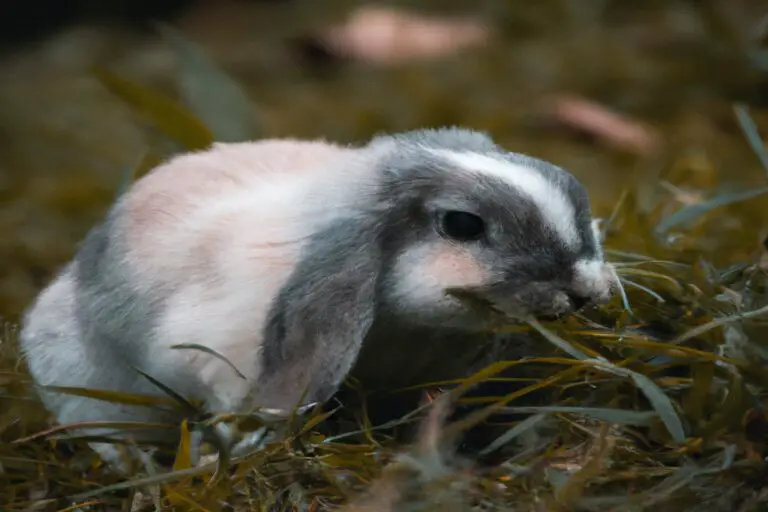Do Rabbits Need Heat Lamps for Optimal Health?
Key Takeaways:
- Rabbits do not need heat lamps in most cases.
- Rabbits are well-equipped to handle cold temperatures.
- Heat lamps can actually be harmful to rabbits if not used properly.
- Providing ample bedding and insulation is usually sufficient for keeping rabbits warm.
Are you a devoted rabbit parent or considering getting a fluffy companion? Whether you’re a seasoned rabbit owner or a newbie to the bunny world, here’s something you should know: heat lamps play a crucial role in keeping your beloved furball cozy and comfortable.
But why do rabbits need heat lamps in the first place?
In this article, we’ll delve into the importance of providing the proper temperature for your rabbits, understanding their natural habitat, and the signs of temperature stress. We’ll also discuss the factors to consider when using heat lamps for your rabbits, including choosing the right lamp, safety precautions, and monitoring temperature.
Plus, we’ll address some frequently asked questions regarding heat lamps for rabbits.
So, let’s hop right into it and explore how you can create the perfect warm haven for your bunny buddy!
| Aspect | Yes | No |
|---|---|---|
| Wild Rabbits | No | N/A |
| Pet Rabbits | Depends on the situation | Depends on the situation |
| Factors to Consider | ||
| Temperature | Yes, if extreme cold | No, if adequate indoor temperature |
| Climate | Yes, if living in areas with extreme climate conditions | No, if climate is mild and suitable for rabbits |
| Housing | Yes, if outdoor hutch lacks insulation | No, if housing provides adequate warmth |
| Health | Yes, if rabbit is sick or recovering from illness | No, if rabbit is healthy |
| Advantages of Heat Lamps | ||
| Provide additional warmth in cold conditions | Yes | No |
| Can be adjusted for optimal temperature | Yes | No |
| Disadvantages of Heat Lamps | ||
| Possible fire hazard if not used safely | Yes | No |
| May cause overheating if used incorrectly | Yes | No |
Why Do Rabbits Need Heat Lamps?
Rabbits need heat lamps to maintain their ideal body temperature in order to stay healthy and avoid temperature-related stress.
Importance of Providing Proper Temperature for Rabbits
Providing proper temperature is vital for rabbits because they are sensitive to extreme weather conditions.
Rabbits can’t regulate their body temperature well, so they rely on their environment.
If it’s too hot, they can overheat and suffer heatstroke.
Conversely, if it’s too cold, they can face hypothermia.
Maintaining the right temperature range, between 60-70°F (15-21°C), is crucial to keep rabbits healthy and comfortable.
Insulation, heat lamps, or heating pads can be used to provide warmth during colder months.
Monitoring temperature regularly is important to ensure their well-being.
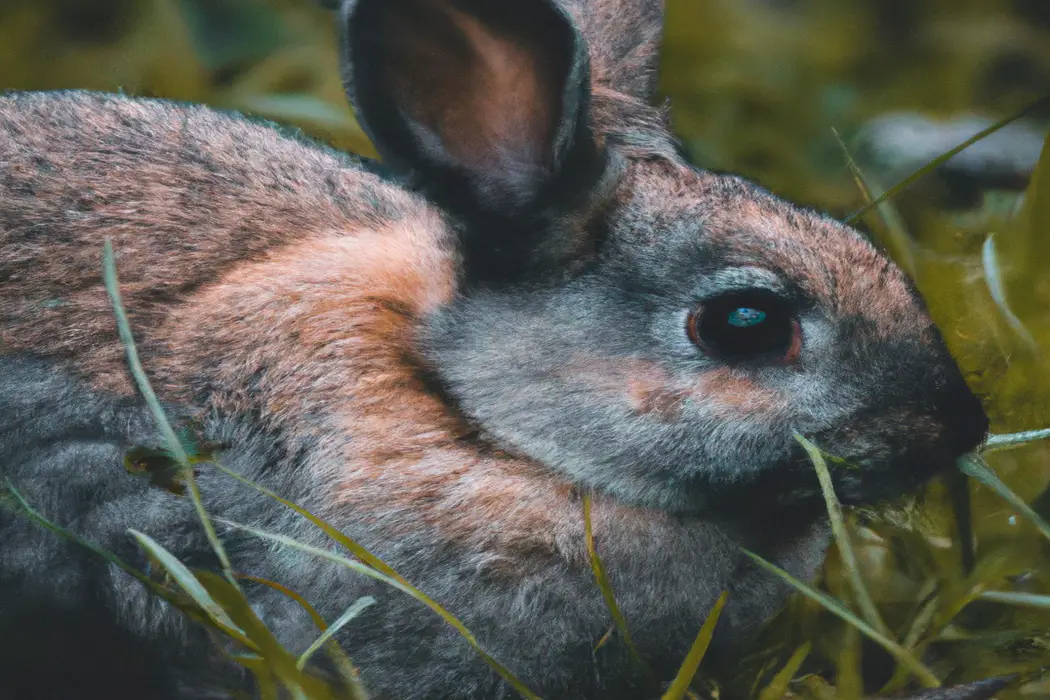
Understanding the Natural Habitat of Rabbits
Rabbits are naturally adapted to live in a specific habitat. They thrive in environments with a moderate temperature range, good air circulation, and adequate shelter.
They prefer areas with plenty of vegetation for food and cover.
Rabbits also require spaces where they can dig burrows and tunnels. Understanding their natural habitat helps us provide the right conditions for their well-being as domestic pets.
Maintaining Ideal Temperature for Your Rabbit
To keep your rabbit healthy and comfortable, it’s important to maintain an ideal temperature in their environment. Rabbits are sensitive to both extreme heat and cold, so finding the right balance is crucial.
Here are a few tips to help you maintain the ideal temperature for your rabbit:
- Keep their living area well-insulated: Ensure that your rabbit’s enclosure is insulated to prevent temperature fluctuations. This can include using insulated flooring, covering the enclosure with blankets, or placing it in a draft-free area.
- Provide a heat source: During colder seasons, you may need to provide a heat lamp or a heated pad for your rabbit. This will help them stay warm and cozy.
- Avoid direct sunlight: While rabbits enjoy natural light, direct sunlight can quickly raise the temperature in their enclosure. Make sure their living area is shaded and well-ventilated to prevent overheating.
- Regularly monitor the temperature: Invest in a thermometer to keep track of the temperature in your rabbit’s environment. This will help you identify any sudden changes and make necessary adjustments.
Remember, rabbits are delicate creatures, and it’s essential to prioritize their well-being by ensuring a comfortable temperature at all times.
Signs of Temperature Stress in Rabbits
Signs of Temperature Stress in Rabbits:
- Heavy panting or rapid breathing
- Lethargy or unwillingness to move
- Loss of appetite or reduced water intake
- Shivering or trembling
- Dull or disheveled fur
- Seeking out cool surfaces or trying to burrow
- Pale or blueish mucous membranes
- Weakness or difficulty walking
- Labored or noisy breathing
- Unresponsiveness or collapse.
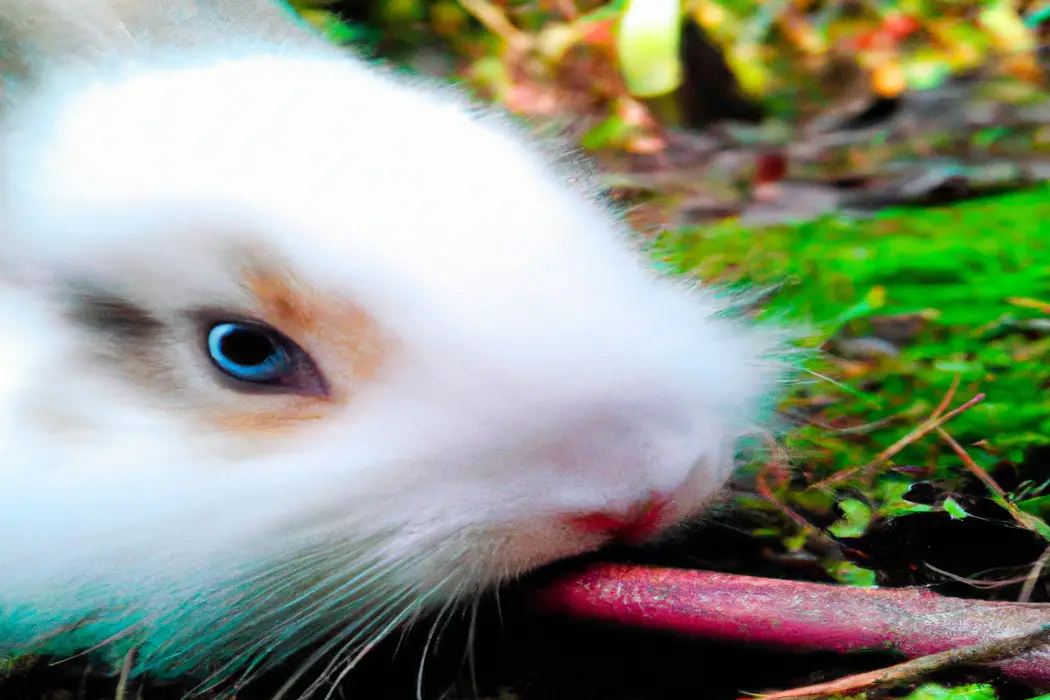
Factors to Consider When Using Heat Lamps for Rabbits
When using heat lamps for rabbits, there are a few important factors to consider.
Choosing the Right Heat Lamp for Your Rabbit
Choosing the right heat lamp for your rabbit is important to ensure their safety and comfort.
Here are some factors to consider:
- Size and wattage: Choose a lamp that is appropriate for the size of your rabbit’s enclosure. A 60-100 watt bulb is usually sufficient for a small to medium-sized enclosure.
- Heat output and control: Look for a heat lamp that provides a consistent level of heat. Adjustable lamps with temperature control are recommended to avoid overheating or chilling your rabbit.
- Safety features: Opt for a lamp with safety features like a sturdy clamp or stand, a ceramic socket for heat resistance, and a protective guard to prevent direct contact with the bulb.
- Bulb type: Use infrared or ceramic bulbs instead of traditional incandescent bulbs, as they produce radiant heat without emitting excessive light that may disturb your rabbit’s sleep patterns.
- Insulation: Consider insulation options like a heat-resistant cage cover or reflective material to maximize the effectiveness of the heat lamp and minimize heat loss.
Remember, always monitor the temperature closely and maintain a comfortable environment for your rabbit.
Consult with a veterinarian for specific recommendations based on your rabbit’s breed and individual needs.
Placement and Safety Precautions for Heat Lamps
When placing heat lamps in a rabbit’s enclosure, it’s important to consider safety precautions.
Ensure the lamp is securely fastened and positioned out of the rabbit’s reach.
Keep flammable materials away from the lamp, as they can pose a fire hazard.
Be mindful of the temperature, as overheating can harm your rabbit.
Regularly check the lamp and surrounding area for any signs of damage or wearing.
Providing a safe and appropriate heat source is essential for your rabbit’s well-being.
Monitoring Temperature and Adjustments
Monitoring the temperature is important when using heat lamps for rabbits.
You should regularly check the temperature in the rabbit’s enclosure to ensure it is within the appropriate range.
Use a reliable thermometer and place it in a central area to get an accurate reading.
Adjust the height or wattage of the heat lamp as needed to maintain the desired temperature.
Take note of any signs of discomfort or distress in your rabbits, as they can indicate that the temperature needs to be adjusted.

Alternatives to Heat Lamps for Rabbit Heating
There are several alternatives to heat lamps for rabbit heating that you can consider.
One option is to use heated pads or blankets specifically designed for small animals.
These provide a gentle and consistent heat source without the risks associated with heat lamps.
Another option is to use ceramic heat emitters, which emit heat without producing light.
These can be installed in a safe and secure manner within the rabbit’s enclosure.
Additionally, you can provide extra bedding and insulation in the rabbit’s hutch or enclosure to help retain heat.
Frequently Asked Questions about Heat Lamps for Rabbits
Can Rabbits Survive Without Heat Lamps?
Rabbits are resilient animals that can survive without heat lamps, as long as they are provided with appropriate shelter and bedding. However, it’s important to monitor their environment and make adjustments as needed.
If temperatures drop significantly, it’s advisable to provide additional insulation, such as extra bedding or placing the hutch in a sheltered area.
Pay attention to signs of discomfort, such as shivering or decreased activity. Providing a warm refuge for your rabbit will help ensure their well-being.
Can Heat Lamps Be Used in Outdoor Rabbit Hutches?
Yes, heat lamps can be used in outdoor rabbit hutches, but caution must be taken to ensure the safety and well-being of the rabbits.
It is important to choose a heat lamp specifically designed for use in animal enclosures and ensure that it is securely mounted in a way that prevents any contact with flammable materials.
Additionally, the heat lamp should be positioned at a safe distance from the rabbits to prevent burns or overheating.
Regular monitoring of the hutch temperature is crucial to avoid any potential harm to the rabbits.
What Are the Risks of Improper Use of Heat Lamps for Rabbits?
Improper use of heat lamps for rabbits can pose several risks.
- Fire hazards: If the heat lamp is placed too close to bedding or flammable materials, it can start a fire and put the rabbit at risk of injury or death.
- Burns: Rabbits can accidentally come into contact with the hot bulb or the heated surfaces, resulting in burns on their sensitive skin.
- Overheating: If the heat lamp is set to a high temperature or left on for extended periods, it can cause the rabbit to overheat, leading to heat stroke or dehydration.
- Electrical hazards: Poor wiring or improper handling of the heat lamp can result in electrical shocks or electrocution for both the rabbit and the caregiver.
To ensure the safety of your rabbit, it is important to carefully follow the manufacturer’s instructions for the appropriate use of heat lamps and to regularly inspect the equipment for any potential dangers.
Should Heat Lamps Be Used at All Times?
Heat lamps for rabbits should not be used at all times. While rabbits can benefit from heat lamps in certain situations, such as during extreme cold weather or for newborn kits, it is not necessary for them to have heat lamps constantly.
Rabbits are adaptable and can regulate their body temperature naturally.
Providing a comfortable and well-insulated living environment for your rabbits, along with plenty of bedding material, is usually sufficient to keep them warm and healthy. Monitoring their behavior and body condition will help you determine if additional heat is needed.
Final Verdict
Providing the proper temperature for rabbits is crucial to ensure their well-being and prevent temperature stress. Understanding their natural habitat and maintaining the ideal temperature is essential for their health.
When using heat lamps, it is important to choose the right lamp, follow safety precautions, and monitor the temperature closely.
However, alternatives to heat lamps such as insulation and heated mats can also be effective in providing warmth for rabbits. Ultimately, the use of heat lamps should be based on individual rabbit needs and the specific environmental conditions.
By prioritizing their temperature needs, you can ensure the comfort and longevity of your beloved rabbits.

